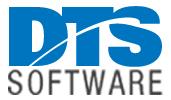Over the past three years, the world has undergone arguably one of the largest labor market shifts in recent history. Throughout the pandemic, we’ve seen a massive uptick in union organization, an overnight shift to hybrid and remote work options, and what some have come to call “The Great Resignation.”
Perhaps the most obvious symptom of this era has been the near ubiquity of “help wanted” signs in local restaurants, grocery stores, childcare centers, etc. Undoubtedly, though, this movement has affected every sector of the job market.
The mainframe industry has been careening toward this reality for decades. Eclipsed over time by the attraction of newer tech, the mainframe’s talent pool is dwindling. One of its major strengths – reliability – is also one of its downfalls, as a platform so well-designed that it rarely breaks down was seemingly forgotten over time. Out of sight, out of mind. That is until the mainframe staff began to retire and replacements weren’t readily available.
The first and second generations of mainframers who entered the field at a time when the platform was relatively new and more likely to be a sought-after career path, are aging out. Some are even retiring early after enduring the challenges of working through the pandemic.
While we’re seeing some programmers working past the age of retirement, there are often few suitable candidates to replace them. And many of today’s generation of college graduates haven’t even heard of the mainframe, exacerbating the lack of available talent.
A part of the solution, and one that is happening organically, is that non-mainframe developers are moving over to the mainframe because the opportunities are greater for advancement. The mainframe is also a more strategic environment than Windows/UNIX-based systems. Because it is the most important, technical IP in the organization, some young programmers are attracted to working with the mainframe, knowing it will bring them increased satisfaction while making more of a difference.ie.
Understaffed and Underfunded. How Long Can It Last?
According to a recent study by Forrester Consulting on behalf of Deloitte, 79% of 261 business and IT leaders surveyed cited their top mainframe-related challenge is acquiring the right resources and skills to get their work done. Seventy-one percent said their mainframe team is understaffed and 54% said their team was underfunded.
These numbers should be alarming to us all! Though this fact may elude folks outside of the mainframe community, we know well just how essential the mainframe is to processing and safeguarding the world’s most critical data. From government to healthcare, airlines, banks, and more, the mainframe is an essential component to keeping these industries up and running. And without the workforce to maintain the platform, we all could suffer disastrous consequences in the industries that most rely on the mainframe – telecom, banking, insurance, healthcare, and government.
Fortunately, with the rest of the world experiencing major workforce shortages, this moment has forced everyone to take a deep look at how to rebuild IT infrastructures sustainably for the future. The problem is no longer ignorable for the mainframe industry, and that means there’s a renewed urgency to address challenges that have faced mainframers for decades.
So how do we begin addressing these challenges? At DTS Software, we believe the solution to closing the skills gap starts first with replenishing the talent pool. Education is key. Education efforts will inevitably take a long time to come to fruition, so this must be the most urgent aspect of the strategy. One upside to an aging mainframe workforce is the fact that the knowledge and experience level of today’s professionals is sky-high. These folks are bursting at the seams with mainframe knowledge, and this knowledge must be transferred to the next generation, or we risk losing it.
DTS Software founders are some of these professionals with a lifetime’s worth of knowledge under their belts, and they are dedicated to providing the highest quality educational resources out there. DTS CTO Steve Pryor’s monthly webinar series has been viewed by thousands of mainframers in the industry looking to learn new skills or brush up on highly technical aspects of the platform. Our library of Steve’s webinars is free and open to the public for viewing on-demand, and registration is open now for our January webinar titled “Understanding your ACS Routines” taking place Tuesday, Jan. 24 at 11 a.m. ET.
The second strategy to begin closing the skills gap is to lean on technology to optimize the jobs of mainframe professionals, so they can handle the ever-increasing demands of their workloads. Mainframe modernization is essential to easing the transition for the next generation of workers who will be tasked with managing more data than ever before. At DTS, we take this role seriously as pioneers in enterprise storage management software, and we’re one of many companies innovating to bring mainframe technology into the 21st century and beyond.
Though the road ahead will be challenging, we know our greatest strength as mainframers is our sense of community and collaboration, and we’re looking forward to a new year of building a strong foundation for years to come.
To view DTS’s library of on-demand webinars, and learn more about our enterprise storage management software, visit dtssoftware.com or email us today at support@dtssoftware.com to speak directly with one of our experienced customer service representatives.


